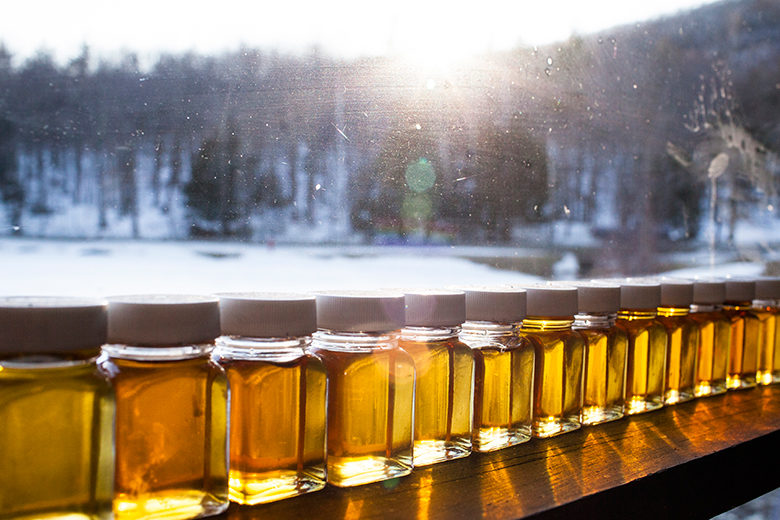
Contrary to popular belief, syrup grades do not suggest superiority — merely different attributes.
The United States and Canada use different terms for national maple syrup grades, and some states, such as Vermont and New York, use their own classification systems to regulate production and marketing. Last year, the Vermont Maple Syrup Makers Association released new labeling standards “to provide a more accurate description based on consumer preference.”
Learn how maple syrup is made.
Labeling all four classifications as “Grade A” syrups and describing both color and flavor, New York State also is adopting these standards. “The goal is that it will become an international standard,” says Helen Thomas, executive director of the New York State Maple Producers Association.
Current* Maple Syrup Grades in the United States and Canada
- "Grade A: Light Amber" (“Extra Light” in Canada)
Very light in color, delicate in flavor and ideal for making maple candy and cream.
- "Grade A: Medium Amber" (“Light” in Canada)
Has a pronounced maple flavor and is a traditional choice or drizzling over pancakes or waffles.
- "Grade A: Dark Amber" (“Medium” in Canada)
Has a more robust maple flavor and is used either in cooking and baking or as a table syrup.
- "Grade B" (“Amber” in Canada)
Very dark and traditionally considered a cooking-grade syrup; however, it has recently found a place at the table among maple syrup enthusiasts.
*As of December 10, 2014
Proposed New Standards
The new grades adopted by Vermont and New York and proposed to the USDA label all four classifications as “Grade A” syrups and describe both color and flavor:
- "Grade A: Golden Color with Delicate Flavor"
- "Grade A: Amber Color with Rich Flavor"
- "Grade A: Dark Color with Robust Flavor"
- "Grade A: Very Dark Color with Strong Flavor"
